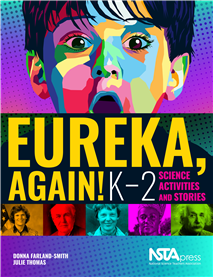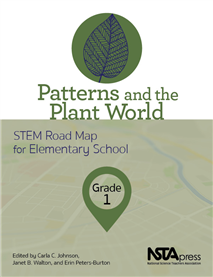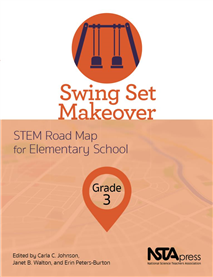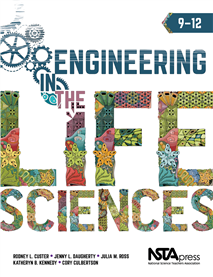All Book Chapters
Book Chapter
Scientists and Engineers USE “OUT OF THE BOX” THINKING
In this lesson, students learn that scientists and engineers use “out of the box” thinking. They read the book Not a Box, by Antoinette Portis. After reading, students brainstorm ideas of what to turn boxes into. This book selection highlights th...
Book Chapter
Scientists and Engineers DO EXPERIMENTS TO ANSWER THEIR QUESTIONS
In this lesson, students learn that scientists and engineers do experiments to answer their questions. They read the book Noa the Little Scientist, by Shenell L. T. Bolden. After reading, students perform a simple experiment that is developmentally a...
Book Chapter
Lesson Plan 1: Earth’s Sensational Seasons
In this lesson, students explore the concept of the four seasons and how the changing seasons affect plant development. They will begin to understand that seasonal changes are caused by Earth’s tilt as it rotates around the Sun. Students focus on s...
Book Chapter
Lesson Plan 2: Our Container Garden–Design Time
This lesson introduces students to the engineering design process (EDP), the process they will use to design and create their container garden. In this lesson, students work through the first steps of the EDP to develop a plan for their garden. A mat...
Book Chapter
Lesson Plan 3: Our Container Garden–Planting Time
In this lesson, students continue to use the engineering design process (EDP) to create the class container garden. Students move into the Try phase as they construct the garden. Through the construction and planting of their container garden and sub...
Book Chapter
Lesson Plan 1: Forces Push Back
This lesson introduces students to the module and the culminating challenge of the module, the Swing Set Makeover Design Challenge. A video, discussions, and a trip to the school playground help students connect to the project and excite their curios...
Book Chapter
Lesson Plan 2: Slippery Slide Design
In this lesson, students investigate Newton’s laws of motion and apply their learning to make a more efficient ramp on which a car will travel. This learning activity is directly connected to the final challenge in which students build a model of t...
Book Chapter
Lesson Plan 3: Swinging Pendulums
In this lesson, students continue to explore the forces acting on swing set equipment and the motion that results. Science activities focus on balanced and unbalanced forces as demonstrated by pendulums. Lessons learned from measuring pendulum motion...
Book Chapter
Lesson Plan 4: Swing Set Makeover Design Challenge
This lesson serves as the capstone of the module and challenges students to complete their swing set makeovers. The science and mathematics activities guide student teams through building a model of the proposed designs. Students use the engineering ...
Book Chapter
This lesson asks students to devise a solution to the challenge of a decrease in pollinator availability for crop production. The first goal is to introduce students to justified design, which occurs when design choices for an engineering solution ar...
Book Chapter
This lesson asks students to engage in a series of activities to understand the relationship among photosynthesis, respiration, carbon dioxide (CO2), and human impact on the environment. The purpose is to have students design, evaluate, and refine a ...
Book Chapter
This lesson asks students to develop strategies for matching genetic characteristics with environmental conditions to optimize the growth of the Pacific yew tree, which is a threatened species. Student teams will propose and analyze a breeding progra...
Book Chapter
This lesson asks students to develop a synthetic genetic code to minimize the change in amino acid sequence in a protein due to mutations, within given criteria and constraints. Students compile and analyze data for their synthetic genetic code model...
Book Chapter
This lesson asks students to consider the aspects of cell cycle regulation and feedback as they propose a mechanism to stop cancerous cell division with the strategic use of cell cycle regulators. The purpose of designing a cancer treatment protocol ...
Book Chapter
This lesson asks students to explore the positive and negative factors affecting ecosystems and their impact on either an endangered species or an invasive species. Student teams first conduct research on the real-life challenges. Next, the teams des...





